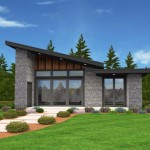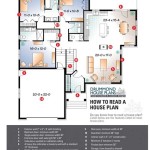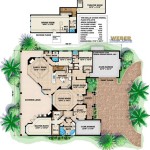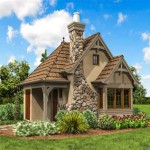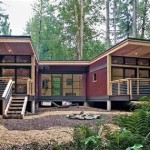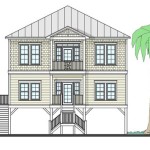Modern Farmhouse House Plans: Your Dream Home Awaits
The modern farmhouse architectural style has experienced a surge in popularity, offering a compelling blend of rustic charm and contemporary design. This style emphasizes comfortable living, expansive spaces, and a connection to the outdoors, appealing to a wide range of homeowners. Understanding the key elements and design considerations involved in modern farmhouse house plans is essential for creating a dwelling that reflects individual preferences and lifestyle needs. This architectural approach prioritizes both aesthetics and functionality, resulting in homes that are both visually appealing and practical for everyday living.
Modern farmhouse design is not simply a replication of historical farmhouses. Instead, it is an evolution, incorporating modern conveniences and technologies while retaining the core aesthetic principles of simplicity, warmth, and natural materials. The style often features open floor plans, large windows for natural light, and exposed structural elements that contribute to a sense of authenticity. Careful consideration must be given to material selections, color palettes, and landscaping to achieve a cohesive and harmonious design.
Key Elements of Modern Farmhouse Design
Several distinguishing characteristics define the modern farmhouse aesthetic. These elements contribute to the overall look and feel of the home, creating a space that is both inviting and stylish.
Exterior Features: The exterior of a modern farmhouse typically showcases clean lines, gabled roofs, and board-and-batten siding. This type of siding is characterized by wide vertical boards with narrower strips of wood covering the seams, creating a textured and visually appealing surface. Large porches are a common feature, providing ample space for outdoor relaxation and entertainment. Windows are often large and plentiful, allowing for abundant natural light to flood the interior. Colors are typically neutral, with white, gray, and beige being popular choices. Accents such as black window frames and metal roofing can add a touch of modern sophistication. The landscaping often incorporates native plants and natural elements, further enhancing the connection to the surrounding environment.
Interior Design: Inside, the modern farmhouse style emphasizes open floor plans that promote a sense of spaciousness and connectivity. The kitchen is often the heart of the home, featuring a large island, farmhouse sink, and open shelving. Natural materials, such as wood and stone, are prominently displayed throughout the interior. Hardwood floors, exposed beams, and shiplap walls are common design elements. Lighting fixtures often incorporate vintage or industrial-inspired designs, adding a touch of character and charm. Neutral color palettes are typically used to create a calming and inviting atmosphere, with pops of color introduced through accessories and artwork. Furniture choices often lean towards comfortable and functional pieces, with an emphasis on natural fabrics and textures.
Material Selection: The selection of materials is crucial in achieving the desired modern farmhouse aesthetic. Natural and reclaimed materials are often favored, adding a sense of authenticity and history to the home. Wood, stone, brick, and metal are commonly used throughout the design. Reclaimed wood can be used for flooring, accent walls, or furniture, adding a unique and rustic touch. Stone can be used for fireplaces, exterior cladding, or landscaping features. Brick can be incorporated into the design as an accent material, adding texture and visual interest. Metal accents, such as lighting fixtures, hardware, and roofing, can add a touch of modern sophistication. Careful consideration should be given to the sustainability and durability of the materials selected, ensuring that the home is both beautiful and functional.
Planning Considerations for Modern Farmhouse House Plans
Developing effective modern farmhouse house plans requires careful consideration of several key factors. These factors influence the overall design, functionality, and livability of the home.
Lifestyle and Needs: Before embarking on the design process, it is essential to carefully assess the homeowner's lifestyle and needs. This includes considering the size of the family, the amount of space required, and any specific functional requirements. For example, a family with young children may prioritize a large playroom or a fenced-in backyard, while a retired couple may prefer a smaller, more manageable home with easy access to outdoor living spaces. The design should also take into account any hobbies or interests that the homeowner may have, such as gardening, woodworking, or entertaining. By carefully considering these factors, it is possible to create a home that is perfectly tailored to the homeowner's individual needs and preferences.
Site Considerations: The characteristics of the building site play a significant role in the design of a modern farmhouse. Factors such as the topography, orientation, and views should be carefully considered. The orientation of the home can significantly impact the amount of natural light that enters the interior, as well as the energy efficiency of the building. The topography of the site may require specific design solutions to address challenges such as drainage or slope. The views from the site should be maximized by strategically positioning windows and outdoor living spaces. In addition, local building codes and regulations must be taken into account to ensure that the design complies with all applicable requirements. A thorough site analysis is essential for creating a home that is both aesthetically pleasing and functionally sound.
Budget and Timeline: Establishing a realistic budget and timeline is crucial for the successful completion of any building project. It is important to carefully consider all of the costs associated with the design and construction of a modern farmhouse, including materials, labor, permits, and landscaping. A detailed budget should be developed and closely monitored throughout the project. A realistic timeline should also be established, taking into account potential delays due to weather, material shortages, or unforeseen circumstances. It is important to work with experienced professionals who can provide accurate cost estimates and project schedules. By carefully managing the budget and timeline, it is possible to avoid costly overruns and ensure that the project is completed on time and within budget.
Interior Design Elements in Detail
Modern Farmhouse homes are all about an inviting warmth from the moment one sets foot inside. It is crucial to understand the components of interior design that make up a modern farmhouse.
Open-Concept Living: The heart of the modern farmhouse often lies in its open-concept living spaces. Kitchens merge seamlessly with dining and living areas, fostering a sense of togetherness and making the home ideal for entertaining. This design choice supports a social and interactive environment, allowing for effortless communication and movement between different areas of the home. High ceilings often complement this openness, enhancing the feeling of spaciousness and airiness. Strategic placement of furniture and décor helps to define distinct zones within the open space without compromising the overall flow.
Neutral Color Palettes: Modern farmhouse interiors typically embrace neutral color palettes, creating a calming and sophisticated atmosphere. Whites, creams, grays, and beiges are commonly used as base colors, providing a blank canvas for incorporating pops of color through accessories, artwork, and textiles. These neutral hues reflect natural light, making the spaces feel brighter and more inviting. Accent walls in soft blues, greens, or even muted reds can add visual interest without overwhelming the overall aesthetic. The key is to maintain a balance that feels both modern and timeless.
Farmhouse Fixtures and Finishes: Fixtures and finishes play a critical role in defining the modern farmhouse style. Farmhouse sinks, exposed beams, shiplap walls, and wide-plank hardwood flooring are hallmark features. Lighting fixtures often draw inspiration from vintage or industrial designs, adding character and charm to the spaces. Metal accents, such as wrought iron hardware and pendant lights, contribute to the rustic yet refined aesthetic. Natural stone countertops, like granite or quartz, provide a durable and elegant surface in kitchens and bathrooms. Thoughtful selection of these elements ensures that the interior aligns with the desired farmhouse charm.
Mixing Old and New: The art of mixing old and new is a defining characteristic of modern farmhouse interior design. Incorporating antique furniture, vintage finds, and repurposed items adds a sense of history and character to the home. These pieces often serve as focal points, telling a story and adding a unique touch. Juxtaposing these vintage elements with modern furniture, sleek appliances, and contemporary décor creates a balanced and visually appealing contrast. This approach allows the home to feel both timeless and current, providing a comfortable and stylish living environment.

Ripondon Modern Farmouse With 3 Bedrooms And 2 1 Baths 2216 Sq Ft

Modern Farmhouse Plan With Flex Room And L Shaped Outdoor Living 4482 Sq Ft Floor Luxe Dreamer

5 Bed Modern Farmhouse Plan With Wraparound Porch And Optional Man Cave Floor Luxe Dreamer

Ripondon Modern Farmouse With 3 Bedrooms And 2 1 Baths 2216 Sq Ft

Modern Farmhouse Plan With Flex Room And L Shaped Outdoor Living 4482 Sq Ft Floor Luxe Dreamer

Farmhouse Style House Plan 5 Beds 4 Baths 2291 Sq Ft 51 1342 Dreamhomesource Com

Plan 80801 Texas Hill Country With Wrap Around Porch And Huge 3 Car Garage

Modern Farmhouse Plan With Flex Room And L Shaped Outdoor Living 4482 Sq Ft Floor Luxe Dreamer

Expanded One Level New American Craftsman House Plan With Home Office And Game Room Floor Luxe Dreamer

5 Bedroom Open Concept House Plans Blog Eplans Com
Related Posts

